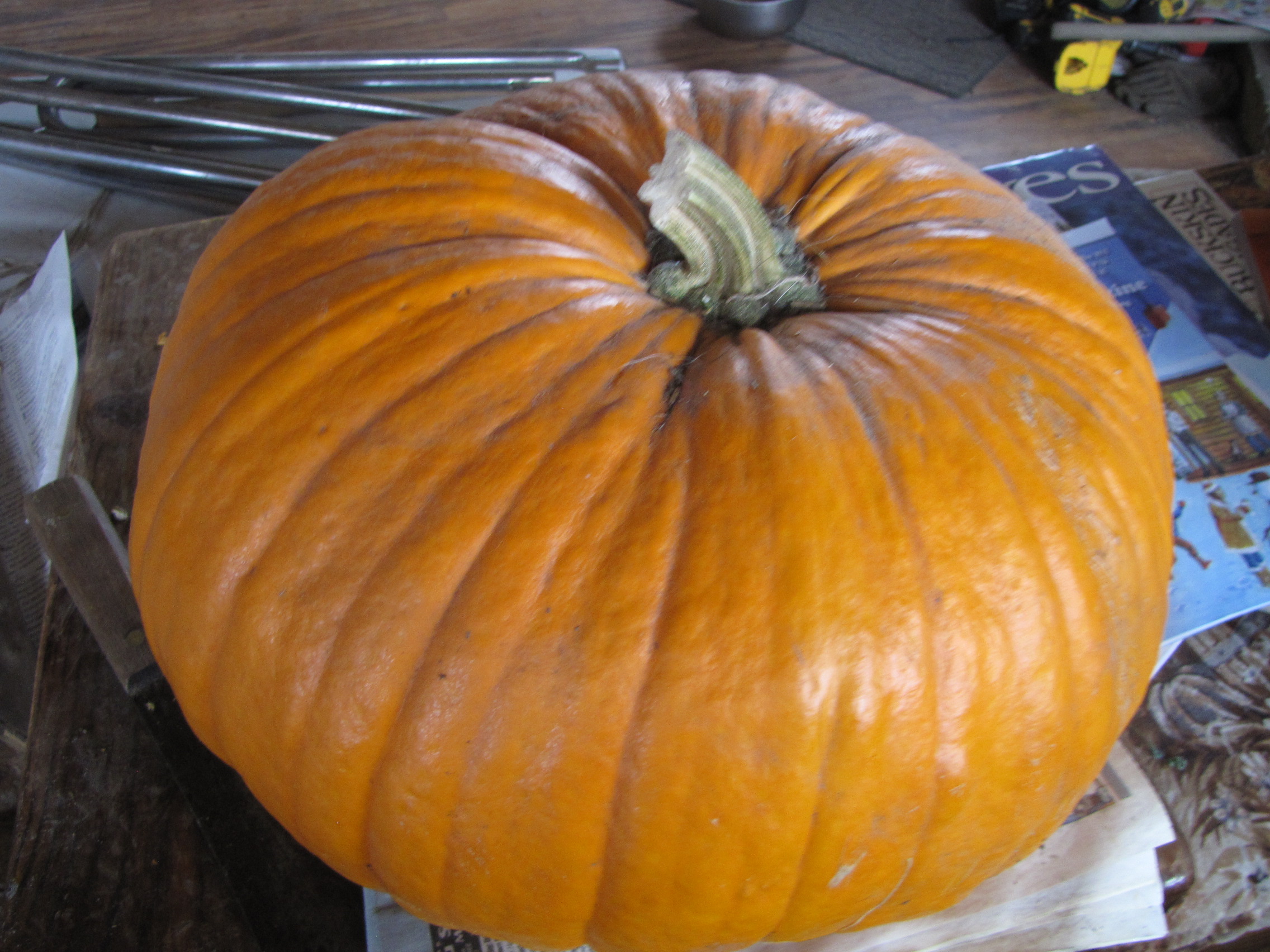It is easy to grow nice pumpkins no matter where you live. In colder, more challenging climates, start your pumpkin seeds indoors in rather large pots as the plants do not like being transplanted and the larger pot will prevent stress which slows down the vine’s growth. Most places, though, you can simply plant your pumpkin seeds in hills about two feet across and a few inches high. We use plenty of rotted manure under our pumpkin hills as pumpkins are heavy feeders. Plant five seeds about an inch deep, four around the outside edge of the hill and one in the center, when the soil has warmed up in the spring. We make our pumpkin rows 10′ apart to allow us to weed between the rows before the vines begin to run. For the very largest pumpkins, thin to one plant, the strongest in the hill. Then keep weeded and watered.
When female flowers (the ones with a “ball” beneath the flower) form, thin to only four on the vine. Then thin the young pumpkins to the very best one. Keep watered and fertilized and stand back!
To save pumpkin seeds, just harvest mature pumpkins, let them cure for a month or so, then open and remove the seeds. Lay seeds out on a cookie sheet and let dry at room temperature, stirring them by hand a few times to avoid clumps. When completely dry, store in an airtight container.
Note: If you plan on saving seeds from your pumpkins, remember that the different species of the genus will cross. So if you plant a C. pepo pumpkin and a C. pepo squash (often zucchini or summer squash), they will cross. Or if you plant a Hopi Pale Grey squash and your next door neighbor grows Hubbards, they’ll also cross. But you can plant one of each species, C. pepo, C. maxima, C. mixta and C. moschata and still save pure seeds as they will not cross. To raise pure pumpkin or squash seeds, they will often need to be planted a mile from the nearest like species unless you have a thick woods, tall hills or some other physical barrier between the crops.
PUMPKINS
PUMPKIN about 20 seeds per pack unless noted
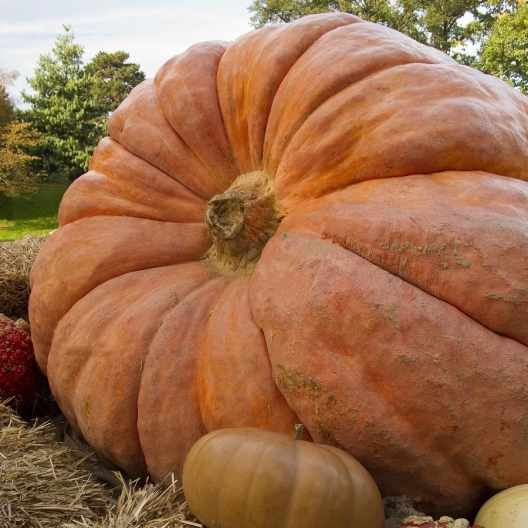
Atlantic Giant
Atlantic Giant ( C. maxima) Atlantic Giant, a variety which has set the record of over a ton of pumpkin in contests amazes folks nationwide. That’s a lot of pumpkin!!! Without special care, yours probably won’t come close but you’ll harvest huge pumpkins anyway. Here in Northern Minnesota, ours usually weigh in at around 200 pounds or a little better, although the world record in 2023 was awarded to a pumpkin grower in Anoka, Mn, who grew a pumpkin weighing over 2,700 pounds. Fun though. Thick meat! 120 days
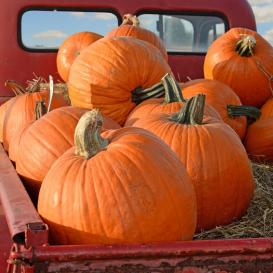
Big Max
Big Max ( C. maxima) Max is the original “giant pumpkin”, first available in the 1950’s. Although it is not as big as the record holder, Atlantic Giant, it does make huge 100 pound plus pumpkins in a more challenging climate than Atlantic Giant. This was my kids’ Giant Pumpkin, for which we searched every Halloween. He even had a name: Murphy! Thick dark yellow meat. 100-110 days.

Galeuse d’Eysines
Galeuse d’ Eysines (aka “The Peanut Pumpkin”) ( C. maxima) An absolutely wonderful, different pumpkin! It’s about 15-25 pounds, a light yellowish tan and covered by peanut-shaped bumps or scars. When mature, the thick flesh cooks up sweet and smooth. Note: this pumpkin is a Cucurbita maxima so it will cross with other C. maxima pumpkins and squash. 95 days
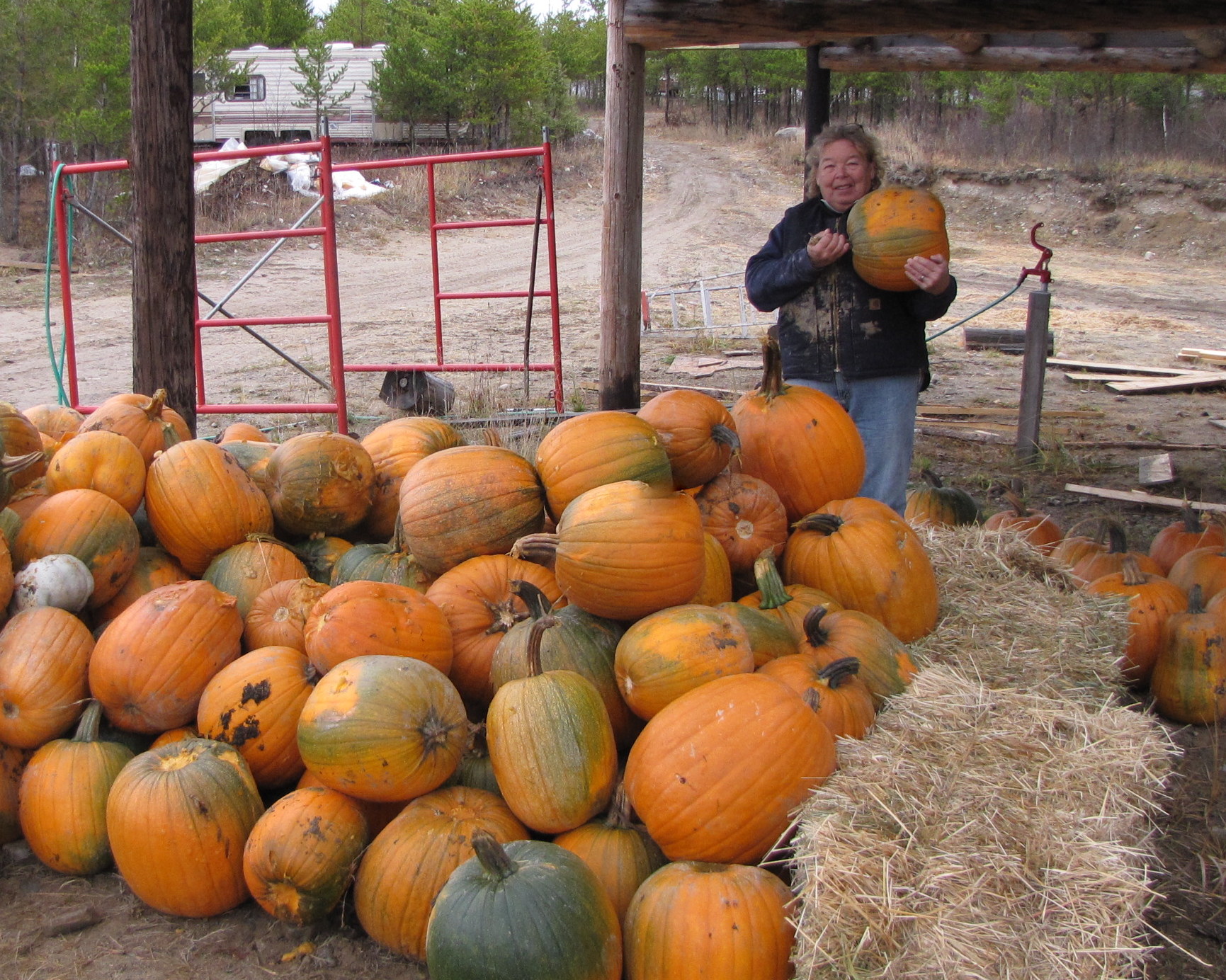
Howden
Howden ( C. pepo) This is our “workhorse” in the pumpkin patch! The bright orange, ribbed pumpkins grow to weigh from between 17 and 58 pounds, having very thick meat. Our largest last fall was 58.2 pounds. Howden can be used for pie and other baking or feed for homestead animals (they LOVE it!). The seeds are also good, roasted and salted and it does produce quite a few in each pumpkin. Rampant vines! 100 days

Long Island Big Cheese
Long Island Big Cheese (C. moschata) This squash which looks like a pumpkin makes a wonderful addition to any squash or pumpkin recipe, whether sweet or savory. Its thick meat is that yummy. And being a C. moschata, it can be grown in the same garden with other pumpkins of C. pepo or C. maxima species. Very productive too.

Moranga del Mesa
Moranga del Mesa (C. maxima) Here’s the pumpkin chefs have been raving over lately. This pretty pink 5 pound round, ribbed pumpkin has everyone drooling over. Not only is it very decorative but makes recipes sing! 100 days
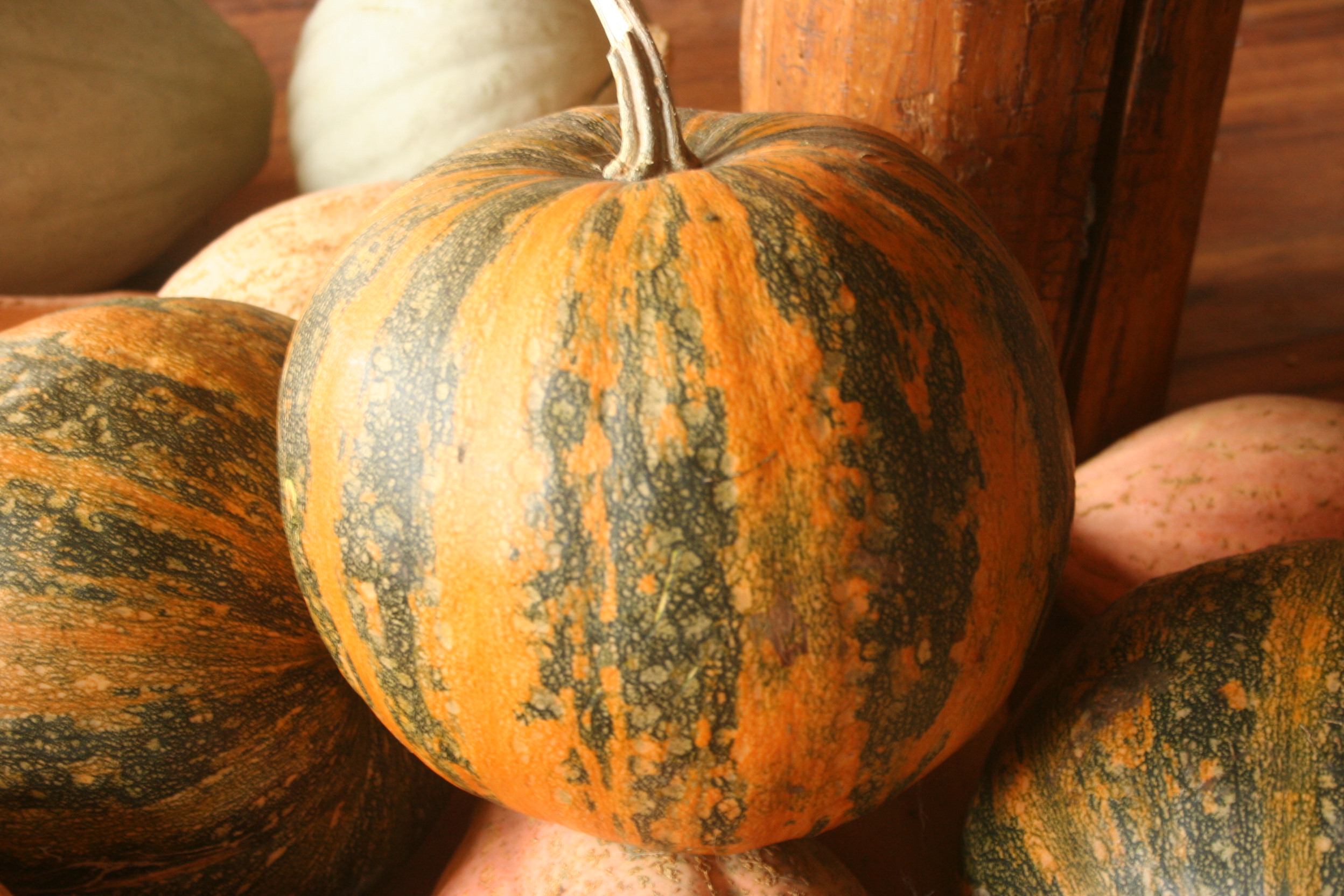
Olinka
Olinka (C. pepo) Here’s a pumpkin with a different angle. It is round, green with a lot of orange but its primary “difference” is its naked seed! We all love to roast and salt pumpkin seeds to eat as a snack. But some of us can’t digest the hulls. Olinka’s seeds do not have hulls, only a paper-thin wrapper. This Eastern European pumpkin is productive of both pumpkins and seeds! The meat is also very good and savory, fried or sautéed! 95 days

Rouge Vif d’Etampe
Rouge Vif d’Etampe aka Cinderella ( C. maxima) Here’s a beautiful red-orange, ribby, productive pumpkin just like the one Cinderella’s Fairy Godmother turned into a coach for the ball! This is one of my favorites for stunning fall displays, weighing 10-25 lbs. Kids always love this pumpkin. And it does make excellent soup and pies. As the flesh is a bit stringy, just throw it in your blender after baking. Very nice. 95 days
San Filipe
San Filipe (C. pepo ) Here’s a great old-time Native pumpkin from San Filipe Pueblo in New Mexico, having it all. It has a somewhat fat, flattened, ribby, dark orange look, averaging about 20 pounds. The flesh and seeds are great for eating and folks just love the look, especially with the long, strong, twisted handle. It’s also relatively early, coming ripe for us in about 95 days. Very lusty, long vines.

Winter Luxury
Winter Luxury ( C. pepo) If you want an absolutely gorgeous, refined, round pumpkin that’s as good as it gets for pies as well as porch decor, this is IT! Winter Luxury, developed in the 1800’s, is a plump little guy, usually weighing between 9-12 pounds. But its distinguishing feature is the pale netting, similar to a cantaloupe’s over the ribbed, orange skin, making each pumpkin simply glow. It’s the very best pie pumpkin. 100 days

